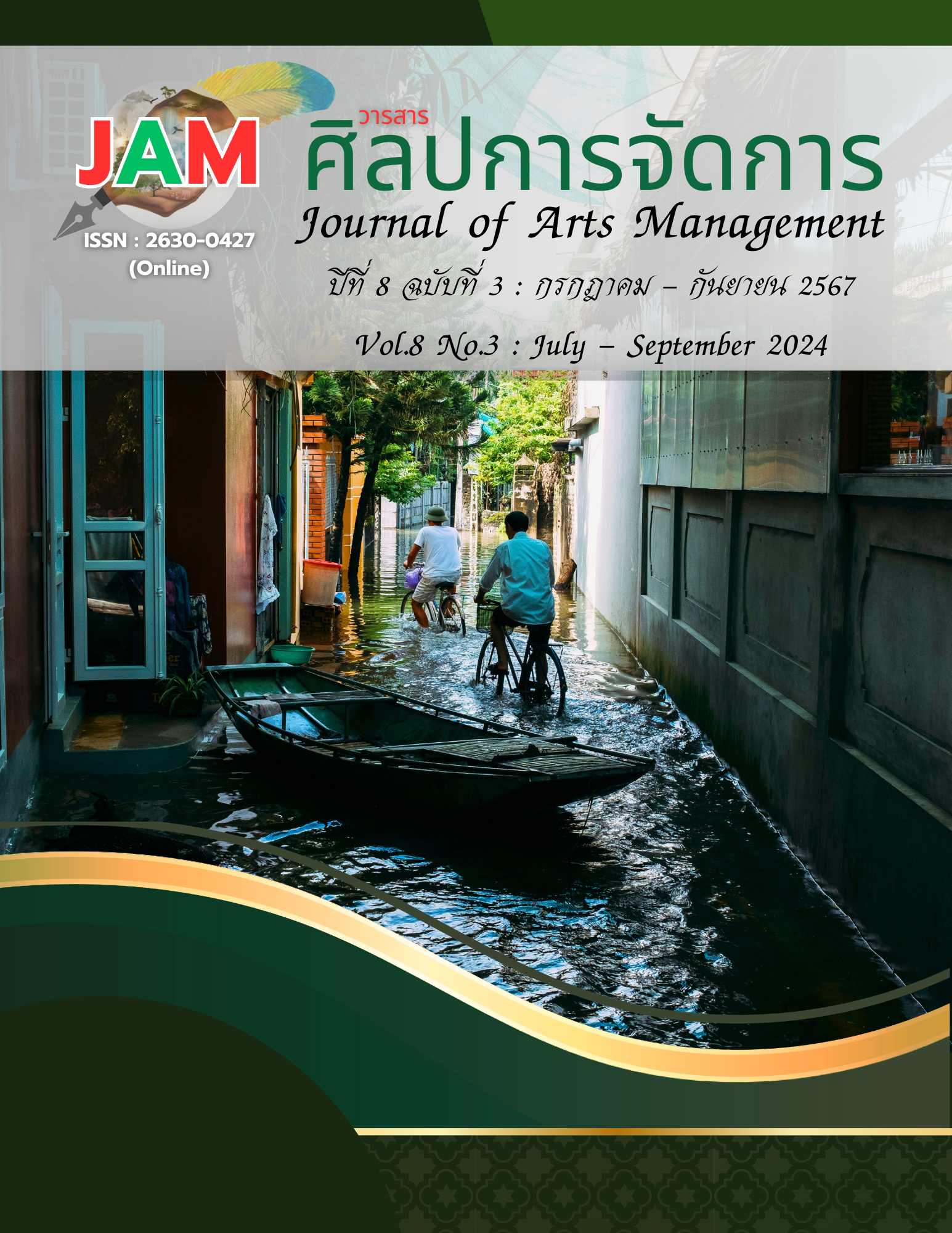The Concept of Applying Meditation to Concretely Alleviate Social Problems
Main Article Content
Abstract
The authors would like to gratefully acknowledge Kasetsart University for providing financial assistance through the Kasetsart University's Academic Development Promotion Project (KU-ADPP-66).
This research article aims to 1) study the concept of meditation practice in Buddhism and the reduction of human defilements; 2) study social problems and solutions; and 3) analyze the relationship and synthesize the concept between meditation practice and social problem alleviation for tangible application. This is documentary research, and the results found that: 1) There are 2 types of meditation: Samatha and Vipassanā. The Buddha taught that defilements, or the AkusalamŪla 3, (Lobha: greed, Dosa: hatred, Moha: delusion), are the real roots of all problems and cause human suffering and harm to others, of which Moha has the most influence, which is directly eliminated by meditation. Because of the mental state from the Upacārasamādhi levels (Samatha), the 5 Jhanas arise to eliminate the Nīvaraṇa 5 (5 hindrances), resulting in pure, peace, still, and steady, then entering Vipassanā to exterminate the Saṁyojana 10 (10 fetters). If meditation can eliminate defects in the human mind, it results in mitigating social problems. 2) Social problems are occurrences of social disorder until a large group of people are recognized and find a way to solve it together. It can be divided into many issues. Most solutions are based on the effects of the problem, which is a solution at the end of the cause or from the external dimension only; there is still a lack of cause analysis from the human mind according to Buddhism, and 3) Meditation practice is directly related to alleviating social problems because AkusalamŪla 3, the root of all social problems, especially delusion, which meditation can directly control. Therefore, applying meditation with the M-E-D Model is a guideline for alleviating social problems at the mental level. If the majority of people in society have a calm and stable mind with wholesome deeds and the three defiles are few, social problems can be alleviated concretely.
Article Details

This work is licensed under a Creative Commons Attribution-NonCommercial-NoDerivatives 4.0 International License.
Views and opinions appearing in articles in the Journal of Arts of Management It is the responsibility of the author of the article. and does not constitute the view and responsibility of the editorial team I agree that the article is copyright of the Arts and Management Journal.
References
Adsakul, S. (2016). Introduction to sociology (4th ed.). Chulalongkorn University.
Anantnatarat, P. (2021). Education system and social problem solving. Romphruek Journal of the Humanities and Social Sciences, 39(1), 162-176. https://so05.tci-thaijo.org/index.php/ romphruekj/article/view/246870
Department of Religious Affairs. (1982). The Tripitaka in Thai Language (Royal Edition). Department of Religious Affairs.
Finsterbusch, K. (2009). Taking sides - clashing views on social issues (15th ed). McGraw-Hill.
Jandang, P. (2020). The rehabilitation therapy for drug dependency patients by the meditation teaching in combination with the matrix intensive outpatient program at the province of Ubonratchathani. Research and Development Health System Journal, 13(1), 9-16.
https://he02.tci-thaijo.org/index.php/RDHSJ/article/view/254759
Kongkrarean, A. (2022). Developing the Mind of Prisoners Through Meditation. Journal of Social Innovation, 5(2), 79-92. https://jsi.rsu.ac.th/Article/fd1cd5ac-17a5-4fcc-83ab-67a7449d11cc
Leon-Guerrero, A. (2016). Social problems: Community, policy, and social action (5th ed.). SAGE.
Mahachulalongkornrajavidyalaya University. (1996). The Tripitaka in Thai Language (Mahachulalongkornrajavidyalaya Edition). Mahachulalongkornrajavidyalaya University.
Marger, M. N. (2014). Social inequality patterns and processes (6th ed.). McGraw-Hill.
Midgley, J. (2014). Social development: Theory & practice. SAGE.
Phra Brahmagunabhorn (P.A.Payutto). (2012). Buddhadham (Expanded Edition) (32th ed.). Mahachulalongkornrajavidyalaya University.
Phra Brahmagunabhorn (P.A.Payutto). (2016). Dictionary of Buddhism (Dhamma Compilation Edition) (34th ed.). Mahachulalongkornrajavidyalaya University.
Phra Maha Somboon Wutthikro. (2015, March 23). Buddhist movement in modern society: Socially engaged Buddhism. Mahachulalongkornrajavidyalaya University. https://www.mcu.ac.th/article/detail/519
Sanyawiwat, S. (1999). Sociology of social problem (2nd ed.). Chulalongkorn University.
Sernau, S. (2014). Social inequality in a global age (4th ed.). SAGE.
Soontornrot, J., Phra Soponphattanabundit., Phrakhru Sudhikhambhirayan., & Phramaha Samrong Saññato. (2021). The model of using the Four Bhāvanā Dhammas for learning management in moral education schools of educational institution administrators under the office of Mahasarakham primary educational service area 1. Journal of Roi Kaensarn Academi, 6(10), 328-346. https://so02.tci-thaijo.org/index.php/JRKSA/article/view/251498
Suphap, S. (2002). Social problems (18th ed.). Thai Watanapanich.
Thongboon, A. (2015, December 13). The method of solving conflicts in Thai society through Buddhist reconciliation. Mahachulalongkornrajavidyalaya University. https://www.mcu.ac.th/article/detail/14305
Tootam, B. (2017). Buddhist ways to resolve social conflict. Academic Journal of Phetchaburi Rajabhat University, 7(2), 4-11. https://journal.pbru.ac.th/admin/upload/article/5773-2019-06-25.pdf
United Nations (Department of Economic and Social Affairs). (n.d. A). Sustainable development. https://sdgs.un.org/goals
United Nations (Department of Economic and Social Affairs). (n.d. B). World social report: World social report 2025: Building the foundations of strong social contracts (forthcoming). https://social.desa.un.org/issues/world-social-report


